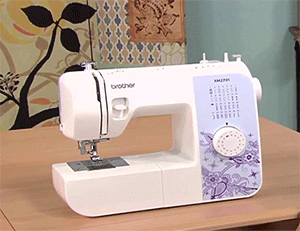Versatility – Comfort – Stretchability – Scary – – All of these words describe today’s knits. There is a large variety of these fabrics on the market today. Knits are used in everything from lingere and swimwear to slacks, tops and dresses and everything in between. We all love to wear knits. But sewing with knits – that’s where the word “scary” comes in.
 If you’re like me sewing with knits has always been a real challenge. I’ve always been one who just sewed and embroidered on the “easier’ fabrics, putting off until another day those hard-to-do things. (I venture to say you have done the same thing.) I use to avoid sewing with knits at all cost – that is until I started an alterations business. Some people wouldn’t understand if I said: “Sorry, I don’t sew on knits”. So, I had to hold my mouth a certain way and plunge in (and it helps to say a prayer or two first). And, I had to pull out all those sewing books on my shelves to gather some much needed information about how to sew with knits.
If you’re like me sewing with knits has always been a real challenge. I’ve always been one who just sewed and embroidered on the “easier’ fabrics, putting off until another day those hard-to-do things. (I venture to say you have done the same thing.) I use to avoid sewing with knits at all cost – that is until I started an alterations business. Some people wouldn’t understand if I said: “Sorry, I don’t sew on knits”. So, I had to hold my mouth a certain way and plunge in (and it helps to say a prayer or two first). And, I had to pull out all those sewing books on my shelves to gather some much needed information about how to sew with knits.
When selecting a pattern for use with knits it is very important to determine the amount of stretch your fabric has. Some of the stable knits (double knits) have a little stretch and maintain their shape well. Some knits have much more stretch to them and should be used only with patterns designed for stretch knits. Swimwear and tighter fitting garments have two-way stretch and greater elasticity. They are the ones used for swimwear.
Listed here are a few of the different knits and a couple of suggestions as to what they can be used for:
-
- Slinky Knit – drapes extremely well and never wrinkles – Use for loose fitting garments such as full dresses or gored skirts

- Lycra Knit Blends – Lycra is combined with nylon, cotton, linen, and wool – Used for exercise wear and swimsuits
- Wool Jersey, Rayon Jersey, Silk Jersey and Nylon Tricot – Suitable for lingerie, tops, loose dresses, full skirts
- Sweater Knits – Great for tops, cardigans
- Slinky Knit – drapes extremely well and never wrinkles – Use for loose fitting garments such as full dresses or gored skirts
When sewing with knits you should know:
- For best results use the layout marked “with nap” because of the shading of the fabric.
- Maximum stretch will be with the crosswise grain.
- Use a ball-point or stretch needle and thread that has a little give (polyester or polyester-wrapped).
- Use a slightly shorter stitch per inch which will allow for more give.
- A walking foot will help in keeping the fabric from stretching too much.
- Be careful not to pull on the fabric as you sew or your seam may be wavy.
- You can also use a very narrow zigzag stitch to sew your knits, which allows even more stretch as you sew.
- If your stitches are too long they tend to break when the fabric is stretched.
- Try really hard to keep from having to rip anything. Ripping seams in knit fabrics is really tough. Make sure your have no rough skin or hang nails that can snag the fabric.
- Oh, and if you use a rotary cutter, make sure your blade is really sharp.
Some knits curl when you work with them. If you run into this problem, place your pattern pieces on the wrong side of the fabric. It would also help to staystitch the edges before stitching (stitch 1/4″ along the edge of the fabric. When a zipper is called for, use a lightweight one.
When you are purchasing your patterns be sure that they are designed for knits or that they list knits as one of the fabric choices. When sewing with knits, adjustments for the amount of stretch must be considered.
These products make sewing with knits SEW much fun and SEW easy:
If you haven’t already used them, this is the time you will want to try out those stitches designed for knits. If you have a coverstitch machine or a serger with a coverstich feature, you’ll love how easy it is to make a beautiful hem, just like the pros.
Or, you can use your serger to create a “lettuce hem”, a really quick, easy and pretty addition to your knit projects – especially those for baby.












